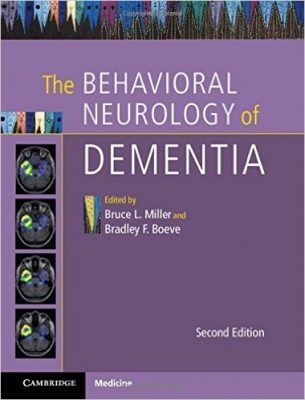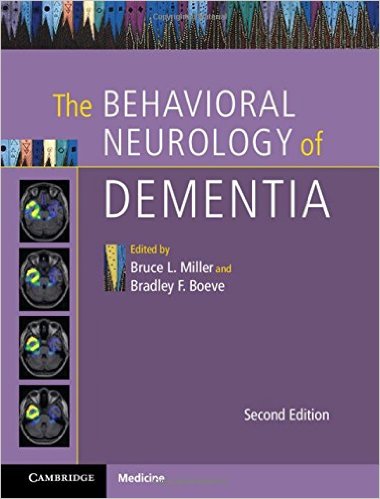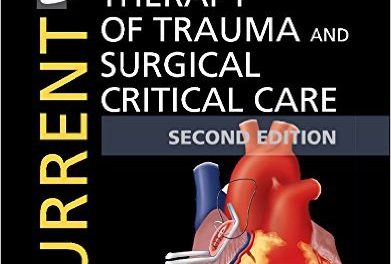 Editors: Bruce L. Miller, MD; and Bradley F. Boeve, MD
Editors: Bruce L. Miller, MD; and Bradley F. Boeve, MD
Publisher: Cambridge University Press – 478 pages
Book Review by: Nano Khilnani
In the not-too-distant past, those who treated dementia patients had fewer diagnostic studies to rely upon to make informed decisions on the correct course of action to take. They had much less data and information on other patients who had similar conditions, and far fewer therapies to consider.
Over the subsequent years, a number of key developments occurred that expanded the number options available to treat those afflicted with dementia. Among them were:
- Advances in the molecular characterization of brain tissue
- Advent of new genetic techniques
- Expansion in the characterization of clinical syndromes associated with varying pathologies
- Immunohistochemistry
- Newer pharmacological and non-pharmacological options
The above-listed items of progress did not occur in a straight line but each one helped the others and led to an overall better situation for researchers, students, clinicians, and ultimately patients.
In short, research, study, treatment, experience, information, and insight have collectively expanded to make it a better world for dementia patients, empowering their physicians, and bringing hope to their family members.
A substantial part of the collective knowledge of the past few years relating to diagnosing and treating dementia was found in the first edition of this book which was published in 2009. Much more knowledge has been accumulated since then, and that was compiled and put forth in this second edition that was released in 2017.
Fifty-one specialists in various aspects of dementia from all over the United States and five other countries – Australia, Canada, Hong Kong, South Korea, and the United Kingdom – authored the 27 chapters of this book that we list below to give you an extensive overview of what is covered in it.
The areas of research, study, and practice that these writers focus on (all of which relate to dementia in one way or another) are: aging, Alzheimer’s disease, cognition, epidemiology, infectious diseases, memory, neuro-degeneration, neurology, neurosurgery, pharmacology, psychiatry, sleep medicine, vascular diseases, and others.
- Dementia at the bedside
- Neuropsychiatry of dementia
- Neuroimaging in dementia
- Epidemiology and risk factors for dementia
- Genetic approaches to neurodegenerative disease
- Animal models of dementia
- Neuropathology of dementia
- Alzheimer’s disease
- Frontotemporal dementia
- Primary progressive aphasia
- The non-fluent / agrammatic variant of primary progressive aphasia
- Semantic dementia (semantic variant primary progressive aphasia
- Logopenic variant of primary progressive aphasia
- The cognitive neurology of corticobasal degeneration and progressive supranuclear palsy
- Amnestic mild cognitive impairment
- Non-amnestic mild cognitive impairment
- Early clinical features of the parkinsonian-related dementias
- The Lewy body of dementias
- Cognitive and behavioral abnormalities of vascular cognitive impairment
- CADASIL: a genetic model of arteriolar degeneration, white matter injury, and dementia in later life
- Jakob-Creutzfeldt disease and other prion diseases
- Autoimmune antibody-associated encephalopathy and dementia syndromes
- Chromic traumatic encephalopathy
- Treatment of Alzheimer’s disease
- Cognitive disorders of the very old
- Delirium masquerading as dementia
- Sleep issues in dementia
In this well-laid out and quite comprehensive yet compact book. you will be pleased to find superb organization of textual and visual materials in each chapter that includes the following elements:
- Brief Introduction or Overview
- Terminology (in some but not all chapters
- Discussions of key matters relating to the chapter title
- Subtopics
- Tables that display and define data points
- Images such as CTs, MRIs, micrographs, PETs, photos, x-rays, etc.
- Conclusion
- References
Editors:
Bruce L. Miller, MD is affiliated with the Memory and Aging Center at the University of California San Francisco in San Francisco, California.
Bradley F. Boeve, MD is affiliated with the Department of Neurology and Center for Sleep Medicine at Mayo Clinic in Rochester, Minnesota.







